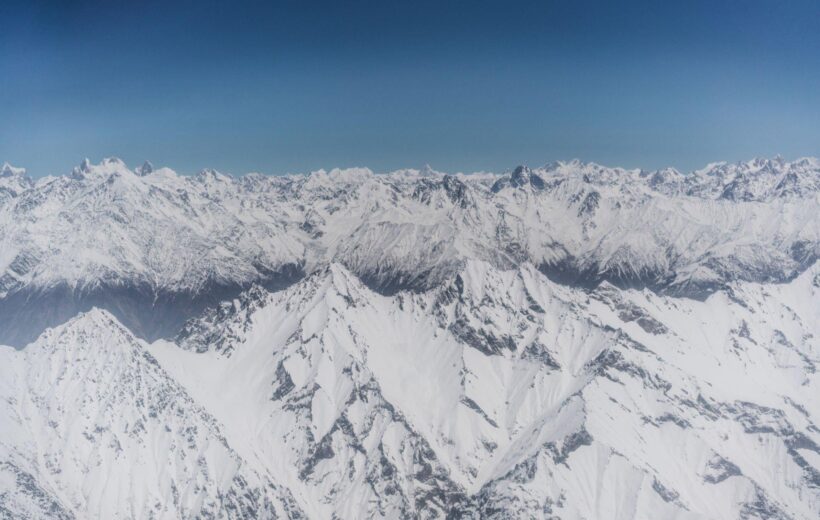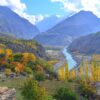Gasherbrum IV Pakistan
Gasherbrum IV Pakistan: An Epic Climb for Thrill-Seeking Adventurers
Gasherbrum IV, often referred to as the “Shining Wall,” is a mountain peak situated in the Karakoram Range of the Himalayas, in the Gilgit-Baltistan region of Pakistan. This peak stands at an elevation of 7,925 meters (26,001 feet) and is ranked as the 17th highest mountain in the world. Gasherbrum IV is famous for its extreme technical difficulty, unpredictable weather conditions, and breathtaking beauty, making it one of the most challenging and fascinating peaks for mountaineers across the globe.
An Overview
Located at the intersection of the Baltoro Glacier and the Gasherbrum Glacier, Gasherbrum IV is one of the most imposing peaks in the Karakoram Range. The name “Gasherbrum” is derived from the Balti words “rgasha,” meaning beautiful, and “brum,” meaning mountain. The mountain comprises six peaks, three of which (Gasherbrum I, II, and III) are higher than Gasherbrum IV, with elevations of 8,068 meters, 8,032 meters, and 7,952 meters, respectively.
Gasherbrum IV was first discovered by western explorers in 1889 when Francis Younghusband and his party explored the region. Since then, it has attracted numerous mountaineers who have attempted to conquer its summit. The first successful ascent was made in 1958 by an Italian team led by legendary climber Riccardo Cassin. Over the years, only a few attempts have resulted in success, making Gasherbrum IV a highly coveted prize in the mountaineering world.

Climbing Routes and Expeditions: Gasherbrum IV Pakistan
There are two main climbing routes for Gasherbrum IV: one is accessed directly from the Baltoro Glacier at a relatively low altitude, and the other is from the glacier fields near Camp One of Gasherbrum I, II, and III. Both routes present their own set of challenges and technical difficulties, making the ascent of Gasherbrum IV an arduous and demanding endeavor.
Early Ascents of Gasherbrum IV
The first successful ascent of Gasherbrum IV was made by the Italian team led by Riccardo Cassin in 1958. The climbers followed a route along the Northeast Ridge, where they encountered difficult technical climbing and severe snowstorms. Only two members of the team, Walter Bonatti and Carlo Mauri, reached the summit. During their descent, the climbers were caught in another blizzard and had to spend the night at Camp Six at an elevation of almost 7,700 meters. The descent to Camp Five at 7,200 meters was equally challenging and dangerous, with one climber narrowly escaping a fatal fall.
Later Expeditions
In 1986, Australian climbers Greg Child and Tim Macartney-Snape, along with American climber Tom Hargis, made an impressive ascent of Gasherbrum IV via the mountain’s Northwest Ridge. Other notable attempts include the 1985 expedition by Polish climbers Robert Schauer and Wojciech Kurtyka, who reached the North Summit but were forced to abandon their quest for the main summit due to extreme exhaustion and bad weather.
Several other expeditions have taken place over the years, with varying degrees of success. In 1995, a strong Korean team attempted the Northwest Ridge but only managed to reach an elevation of 7,800 meters. In 1997, another Korean team successfully climbed the Central Spur of the West Face, reaching the summit. A strong American-South African team attempted the West Ridge in 1999 but was unsuccessful.
Getting to Gasherbrum IV Pakistan
Gasherbrum IV is located in one of the most remote regions of Pakistan. To access the mountain, climbers must first pass through Islamabad, the city where permits for the peak are obtained. From Islamabad, climbers can either join a commercial expedition or organize their own logistics and transportation.

The typical starting point for the trek to Gasherbrum IV is the town of Skardu, which can be reached by local buses from Islamabad. The journey takes between 18 and 22 hours but flying to Skardu from Islamabad will give a bird eye view of the mountains which is a once-in-a-lifetime experience. From Skardu, climbers can choose one of two routes to Gasherbrum IV: via Askole or via the Gondogoro Pass.
Via Askole
The route via Askole involves a jeep ride from Skardu, taking between 6 and 8 hours on rough roads. From Askole, climbers begin their trek towards the mountain, passing through various campsites and settlements, such as Jhula, Paiju, and Urdukas, before reaching the Gasherbrum IV base camp.
Via Gondogoro Pass
The route via Gondogoro Pass is recommended for climbers who are already acclimatized, as the pass stands at an elevation of 5,600 meters. This route provides a more challenging and scenic approach to Gasherbrum IV, offering stunning views of the surrounding peaks and glaciers. From Skardu, climbers travel to the settlement of Hushe and then follow the Gondogoro Glacier until they reach the Gasherbrum IV base camp.
Preparation and Acclimatization
Climbing Gasherbrum IV requires a high level of physical fitness, technical climbing skills, and experience in high-altitude mountaineering. Climbers should be well-prepared and acclimatized before attempting the ascent.
Training
Mountaineers should undergo a rigorous training regimen to prepare for the challenges of Gasherbrum IV, focusing on cardiovascular endurance, strength, and flexibility. Additionally, climbers should have experience in technical rock and ice climbing, as well as familiarity with the use of specialized climbing equipment such as crampons, ice axes, and harnesses.
Acclimatization
Proper acclimatization is crucial for a successful ascent of Gasherbrum IV. Climbers should spend several days at progressively higher altitudes to allow their bodies to adjust to the reduced oxygen levels and lower air pressure. It is recommended that climbers spend time at various campsites along the trek to the base camp, gradually increasing their elevation and allowing for proper acclimatization.
Red Tape and Permits
Climbers attempting Gasherbrum IV are required to obtain a climbing permit from the Pakistani Ministry of Tourism or an expedition agent. The permit fees vary depending on the elevation of the peak, with Gasherbrum IV falling into the 7,501-8,000-meter category, costing $2,000 USD for a team of seven climbers, and an additional $250 USD for each additional climber.
In addition to the climbing permit, climbers must also pay a trekking fee of $50 USD if arranging their own logistics and transportation. This fee is waived for those joining a commercial expedition.
When to Climb the Gasherbrum IV
The ideal climbing season for Gasherbrum IV is from June to September. Attempting the peak during the winter months is highly discouraged due to the extreme cold, high avalanche risk, and unpredictable weather conditions. It is important to monitor weather forecasts and plan the ascent accordingly to increase the chances of a successful summit.
Safety and Risks
Climbing Gasherbrum IV poses several risks and challenges, including extreme weather conditions, technical climbing difficulties, and the potential for altitude-related illnesses. Proper preparation, acclimatization, and experience in high-altitude mountaineering are crucial for minimizing these risks.
Weather on Gasherbrum IV
The weather on Gasherbrum IV is highly unpredictable, with sudden snowstorms, high winds, and rapidly changing conditions. It is essential for climbers to monitor weather forecasts and plan their ascent accordingly. Additionally, climbers should be prepared for extreme cold and be equipped with appropriate clothing and gear to protect against the elements.
Technical Challenges on Gasherbrum IV
Gasherbrum IV is considered one of the most technically demanding peaks in the world, with steep rock and ice faces, complex route-finding, and challenging climbing conditions. Climbers should have extensive experience in technical rock and ice climbing and be proficient in the use of specialized mountaineering equipment.
Altitude-Related Illnesses
Climbers attempting Gasherbrum IV are at risk for a variety of altitude-related illnesses, including acute mountain sickness (AMS), high-altitude cerebral edema (HACE), and high-altitude pulmonary edema (HAPE). Proper acclimatization, hydration, and pacing are essential for minimizing the risk of these potentially life-threatening conditions.
In Conclusion
Gasherbrum IV is a formidable and enigmatic peak that continues to challenge and captivate mountaineers from around the world. With its extreme technical difficulty, unpredictable weather conditions, and stunning beauty, this mountain represents the epitome of high-altitude mountaineering. Those who are willing to face the risks and challenges of Gasherbrum IV will be rewarded with an unforgettable adventure and the chance to stand atop one of the most elusive summits in the world.
Explore More







